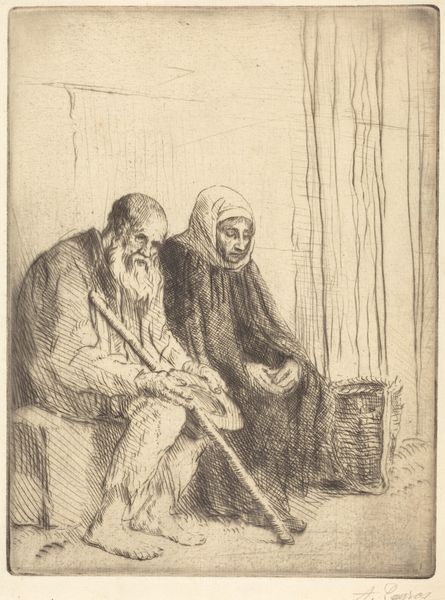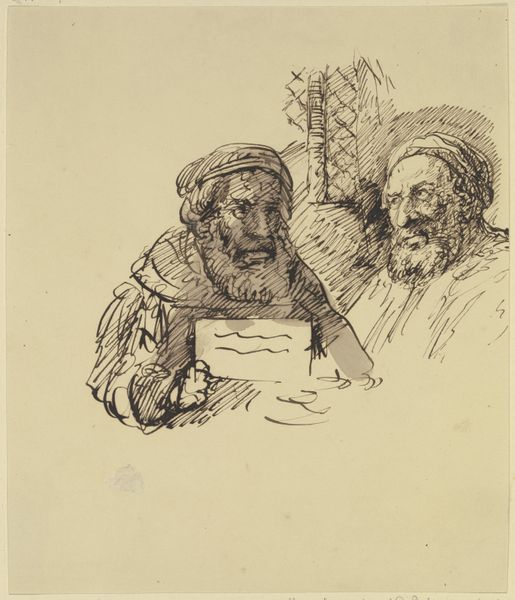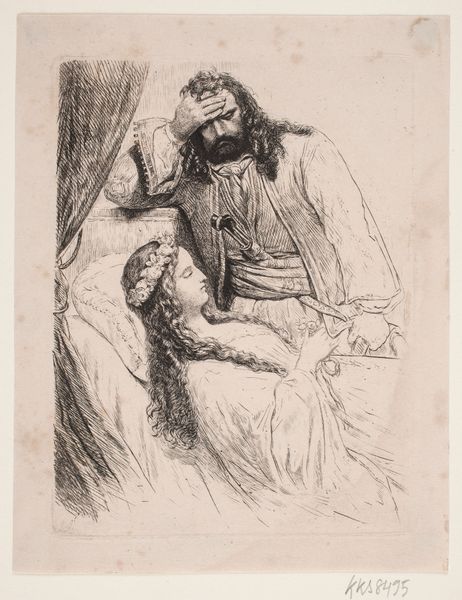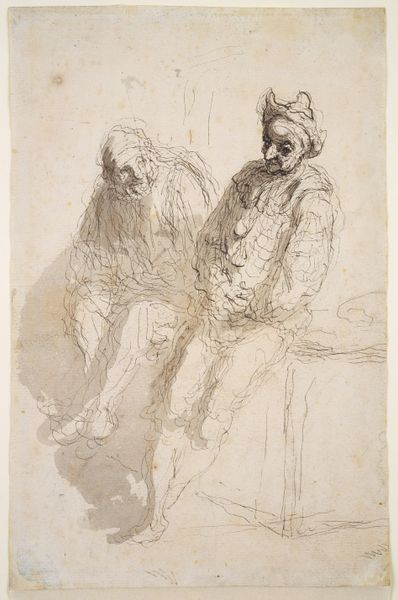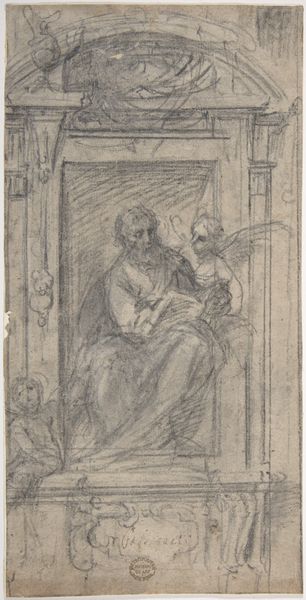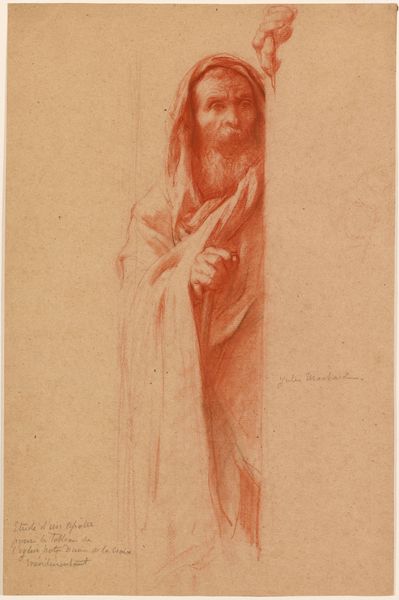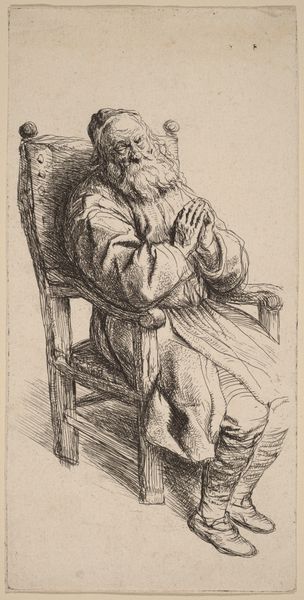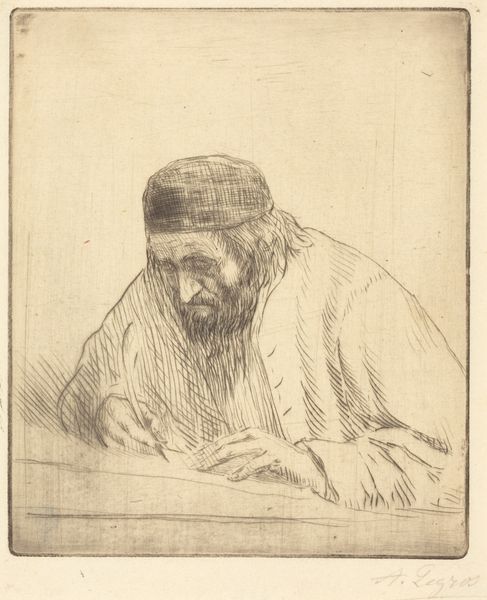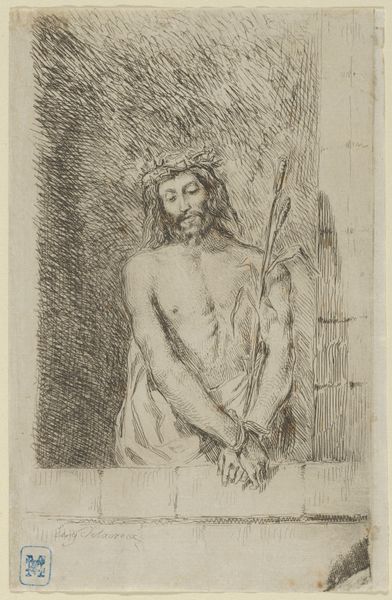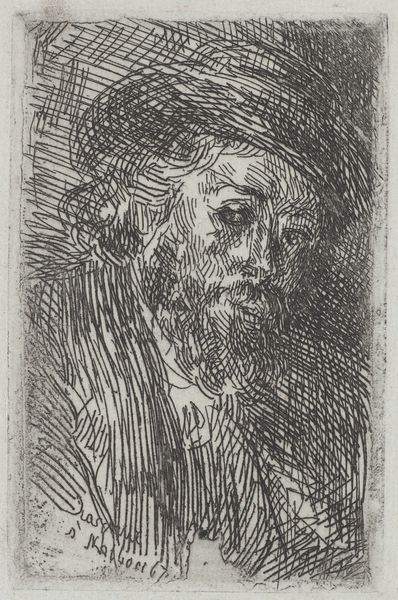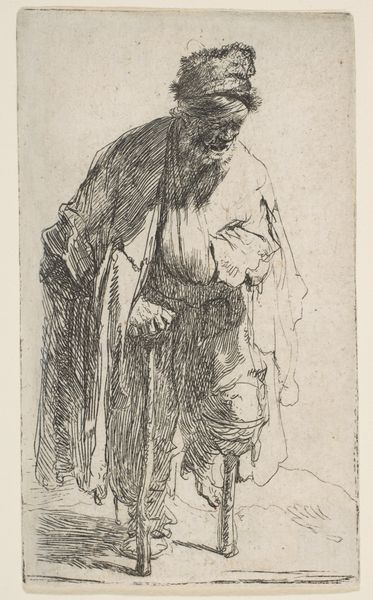
drawing, pencil
portrait
drawing
pencil sketch
charcoal drawing
pencil drawing
pencil
portrait drawing
genre-painting
academic-art
Dimensions: overall: 31.6 x 22 cm (12 7/16 x 8 11/16 in.)
Copyright: National Gallery of Art: CC0 1.0
Curator: Looking at this image, I'm immediately struck by the somber atmosphere. The soft browns and grays lend the scene a quiet, reflective mood. Editor: This drawing, "Two Monks Seated in a Church," is attributed to Alphonse Legros. Though undated, it’s rendered in pencil, a medium allowing for the subtlety of shading we observe here. Notice the academic precision in depicting the robes. Curator: The lines describing the folds and the fall of the cloth definitely suggest skillful training. Considering that monks generally withdraw from secular society and focus on religious practices, how do you read the relationship of these monks and their garments to larger social concerns, as expressed in the work? Editor: For me, that comes down to the materials and methods. Legros has deliberately used inexpensive drawing media—pencil and paper. By creating "high art" from everyday, even humble, supplies, Legros is engaging in the deconstruction of the supposed class divides between "art" and "craft". These are simple men portrayed simply. Curator: That's a valuable reading. I am also contemplating the choices they each embody and what's beyond. To further explore the construction of the monks’ identities, consider that both are cloistered. One clutches what appears to be a book. Are they allowed agency within this confined setting, and what's being communicated about labor? The one in the back appears almost ghost-like. Editor: Interesting, "agency within confinement." I agree, one could view this image through that theoretical lens. For me, there’s a tactile reality to Legros' rendering. Note the texture achieved through the pencil strokes; the varying pressure applied gives real presence to the subjects and evokes the material reality of monastic life: work, worship, repetition, meditation, and poverty. Curator: Your reading of texture and pressure connects with what Foucault calls technologies of the self. This notion explains how power is deployed to influence conduct—consider those meditative practices in connection to labor, poverty and art's capacity for exploring these themes. What a productive layering of thoughts and feelings Legros is inviting us to consider here. Editor: Agreed. The artist offers a nuanced study of humans and our built environment that emphasizes materials and process while touching on grander social and theoretical points.
Comments
No comments
Be the first to comment and join the conversation on the ultimate creative platform.
